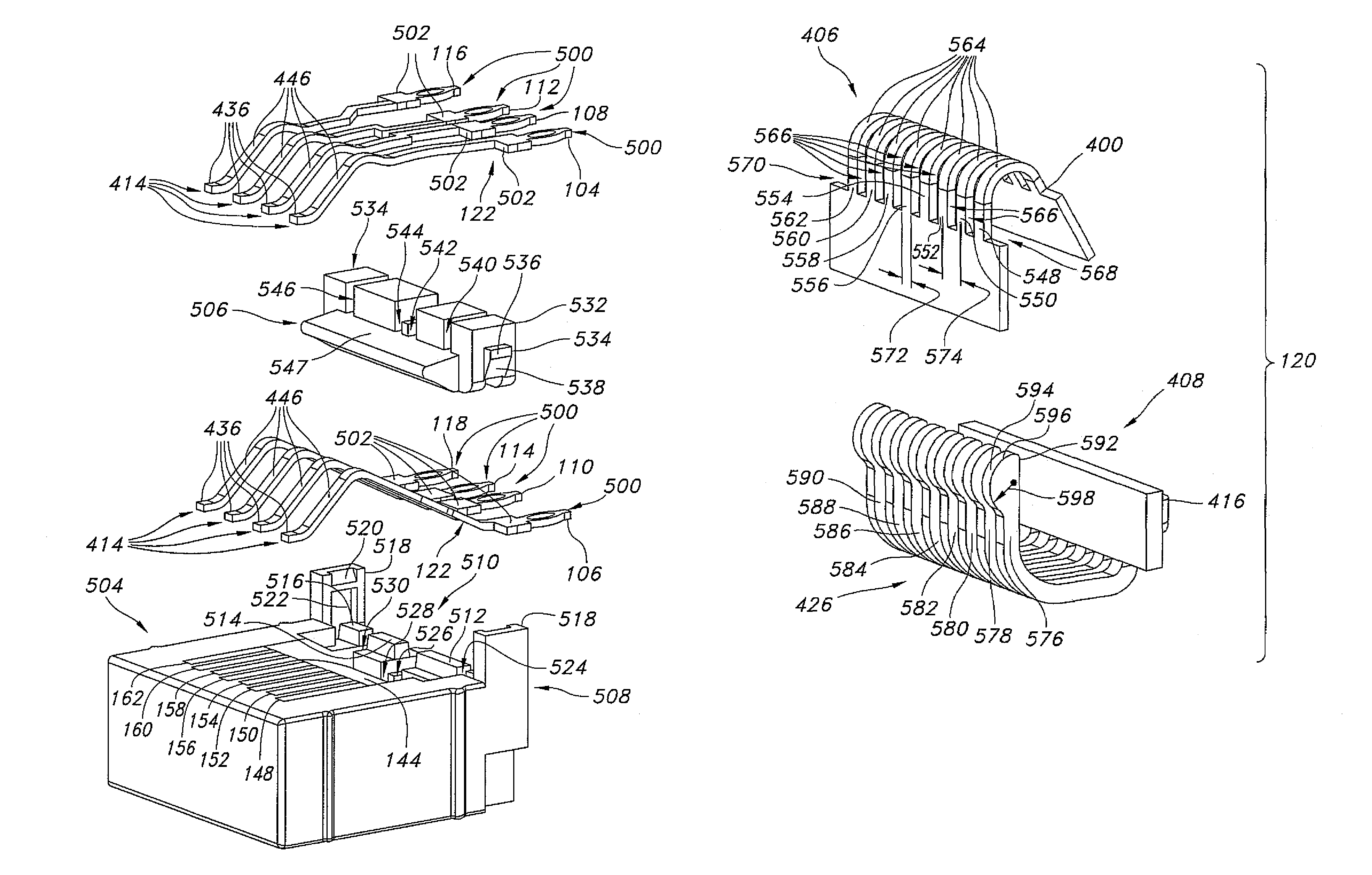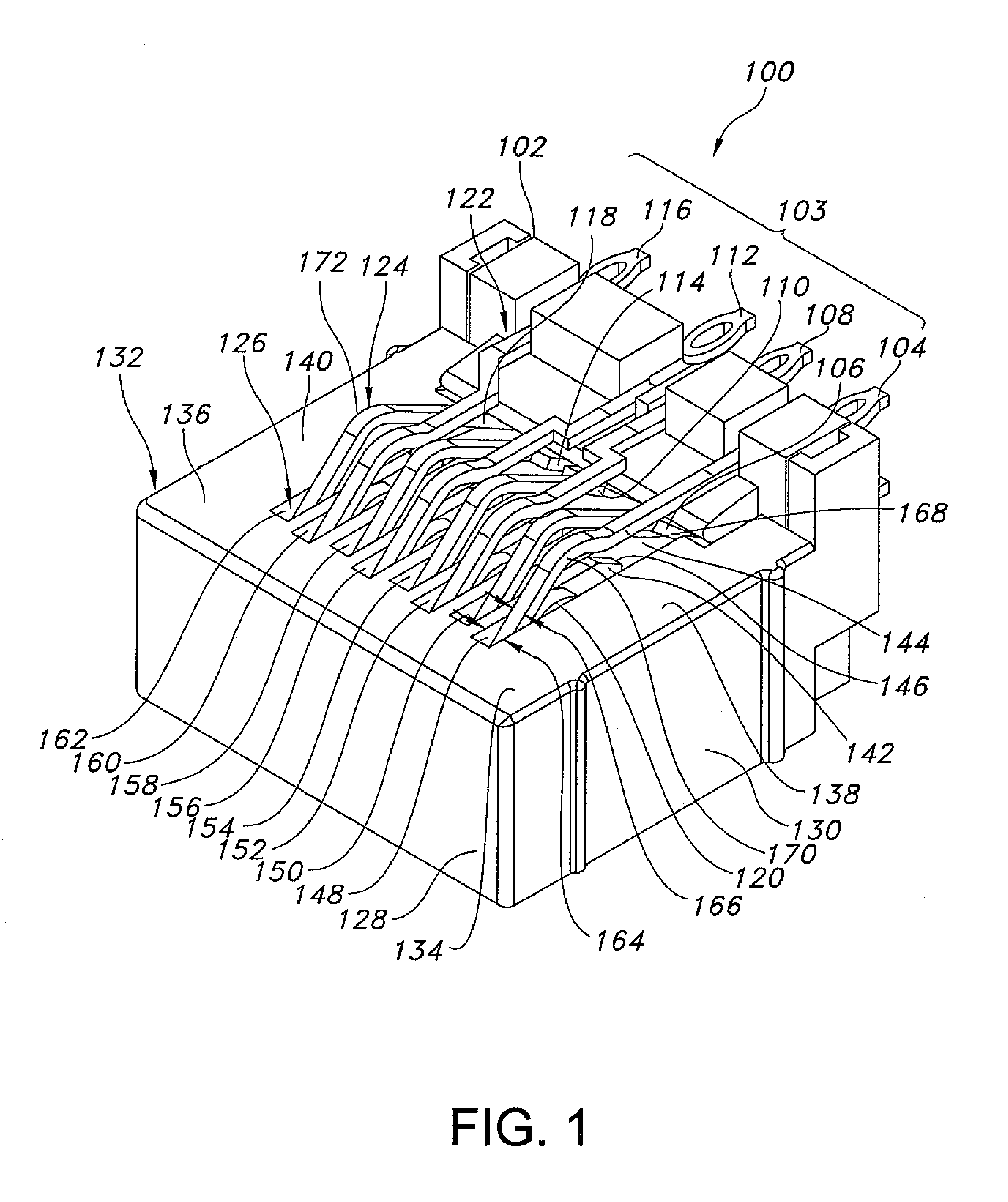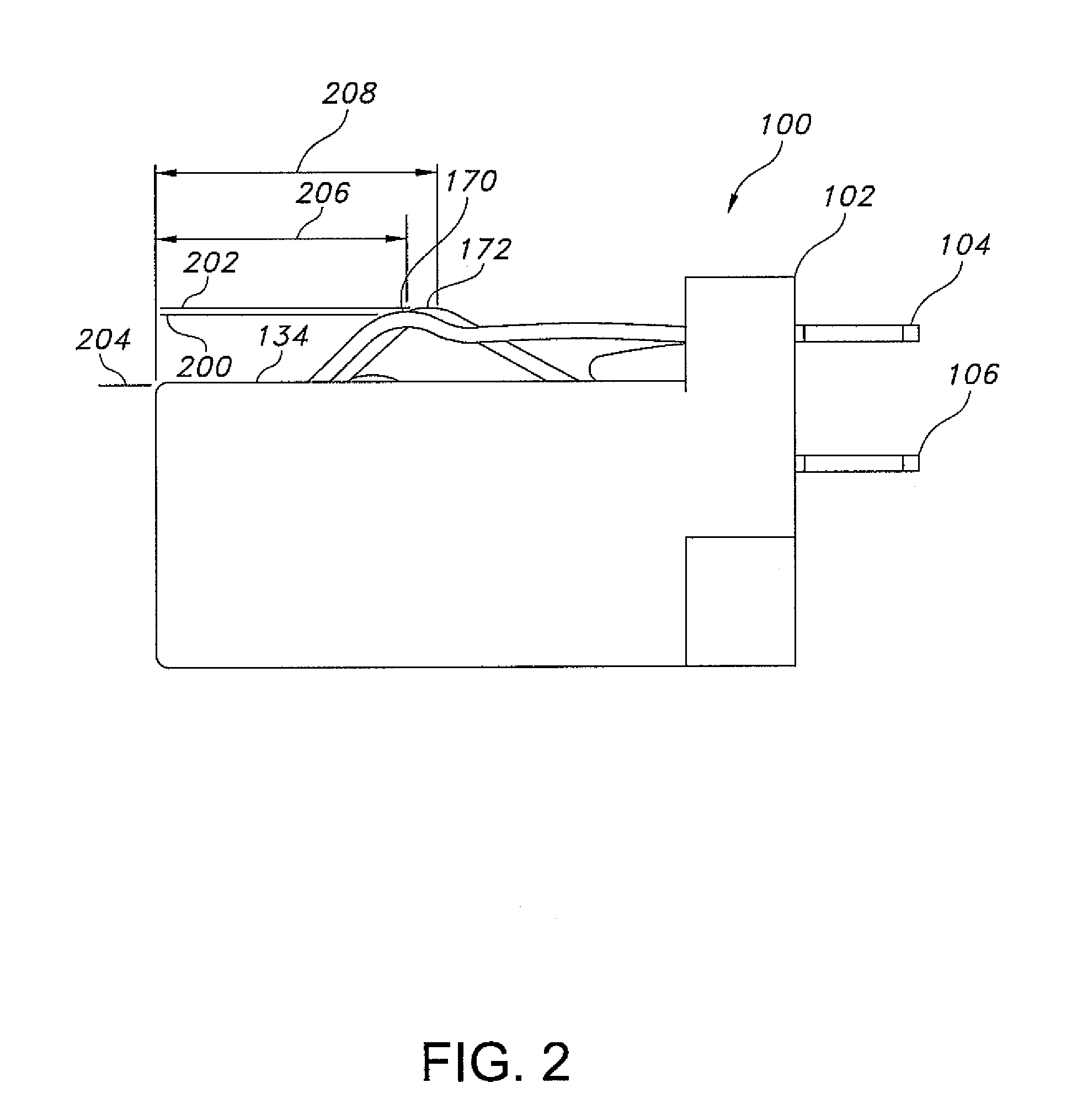Modular insert and jack including moveable reactance section
a reactance section and module insert technology, applied in the field of communication connectors, can solve the problems of interference in the cable, and noise being a primary limit factor in the performance of a communication system,
- Summary
- Abstract
- Description
- Claims
- Application Information
AI Technical Summary
Benefits of technology
Problems solved by technology
Method used
Image
Examples
Embodiment Construction
)
[0066]In accordance with embodiments of the present disclosure, advantageous modular insert assemblies are provided for use in voice / data communication systems, jack assemblies are provided that include such insert assemblies, and jack / plug combinations are provided that benefit from the advantageous structures, features and functions disclosed herein. The present disclosure provides methods for effecting voice / data communications wherein modular insert assemblies, jacks containing the disclosed insert assemblies and / or jack / plug combinations as described herein, are advantageously employed.
[0067]In accordance with embodiments of the present disclosure, modular insert assemblies are provided that include a secondary feature of noise compensation that allows interrupted communications across individual contacts, e.g., based upon interaction with corresponding plug contacts. Such modular insert assemblies may, for example, be incorporated in a telecommunications connector system that...
PUM
 Login to View More
Login to View More Abstract
Description
Claims
Application Information
 Login to View More
Login to View More - R&D
- Intellectual Property
- Life Sciences
- Materials
- Tech Scout
- Unparalleled Data Quality
- Higher Quality Content
- 60% Fewer Hallucinations
Browse by: Latest US Patents, China's latest patents, Technical Efficacy Thesaurus, Application Domain, Technology Topic, Popular Technical Reports.
© 2025 PatSnap. All rights reserved.Legal|Privacy policy|Modern Slavery Act Transparency Statement|Sitemap|About US| Contact US: help@patsnap.com



